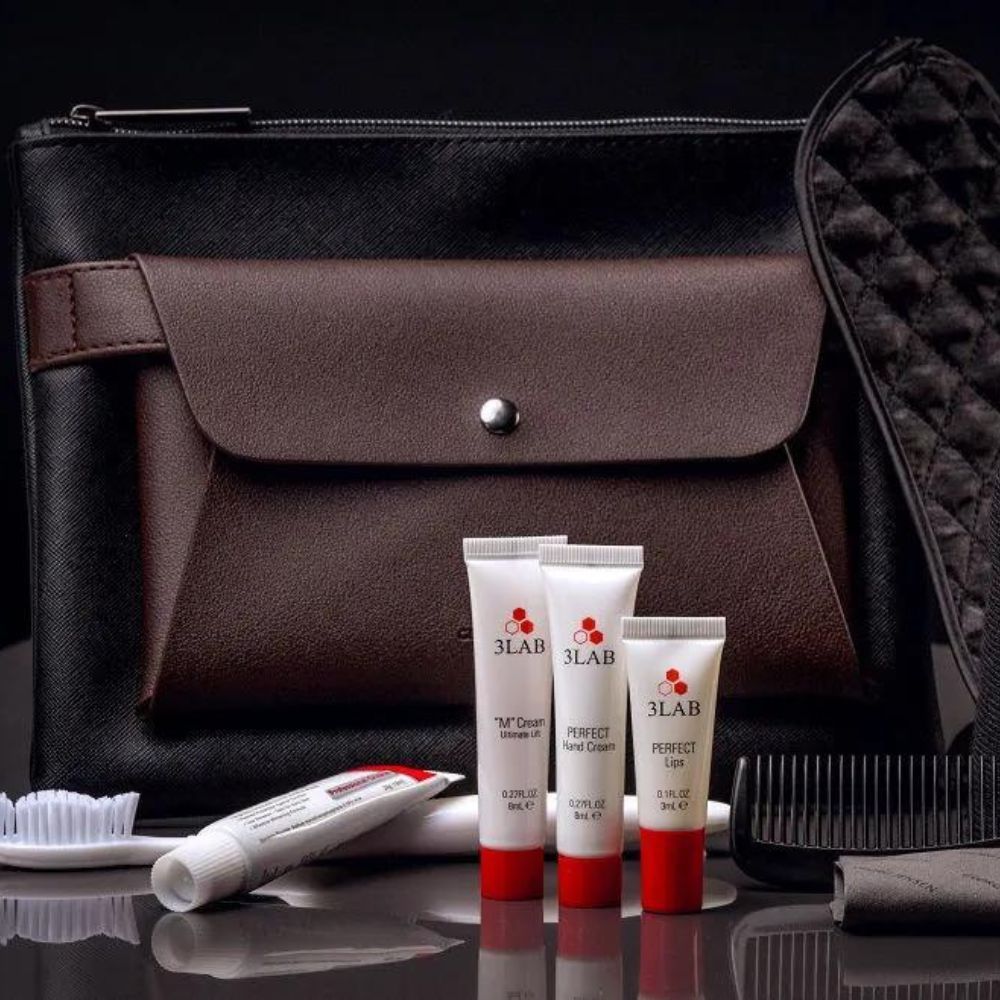
Two decades after the final flight of the Concorde, the supersonic travel industry is going through an exciting reawakening.
In today’s fast-paced world, time has become an increasingly valuable commodity. It’s no surprise then that news of supersonic travel being poised to make a comeback in the foreseeable future – slashing flight times in some cases by four – has been welcomed by travellers and the airline industry alike, making dreaded long-haul flights possibly a thing of the past. But what’s the latest, and when can we expect to get a taste (again) of crashing through the sound barrier?
What you can expect from the supersonic travel industry?
The Concorde was a supersonic passenger jet jointly developed by British and French aerospace companies, British Aerospace and Aérospatiale, in the 1960s. It made its first commercial flight in 1976 and became an icon of aviation with its sleek design, and ability to travel at speeds of up to Mach 2.04 (2,519 km/h) and at altitudes of around 60,000 feet.
This significantly reduced flight times, so much so that you could get from London to New York in less than three hours. Those who experienced a trip on the Concorde have detailed how opulent the experience was – from start to finish. As the aircraft could only fit 100 passengers, tickets were significantly more expensive than an average first-class ticket on any other airline, ranging from USD 6,000 to USD 12,000.
The experience began in a dedicated lounge where passengers were encouraged to mix and mingle, which led to the actual in-flight experience doubling as a ‘social club in the sky’, complete with gourmet meals cooked on board and free-flowing Champagne. Passenger lists were also dominated by royalty, heads of state, celebrities and socialites, who opted to fly the Concorde to attend transatlantic appointments over the course of just one day.
Yet, despite its glitz, glamour, and success with members of the upper echelons of society, after 27 years the Concorde’s operational life came to an end because of several factors; including high operating costs, limited routes, and concerns over noise pollution and its environmental impact, marking the end of an era in supersonic travel… until now.

In recent years, there has been a resurgence of interest in commercial supersonic travel with several companies such as Aerion Supersonic, Spike Aerospace, Swiss Destinus, Venus Aerospace, Lingkong Tianxing, NASA, and Lockheed Martin working to introduce aircraft that will be capable of travelling up to speeds of a staggering Mach 9 (11,113 km/h) in the years to come.
One of the leading forces behind the supersonic return, and arguably the company currently ahead in the race, is Denver-based Boom Supersonic. Founded in 2014 by CEO Blake Scholl, who sold his successful eCommerce business to pursue a venture in an industry that has fascinated him ever since he was a child, the company is currently building a cutting-edge supersonic airliner called Overture.
Overture will be capable of carrying approximately 80 passengers while flying at speeds of Mach 1.7 (1,800 km/h). It will have the potential to transport passengers from New York to London in 3.5 hours, Tokyo to Seattle in 4.5 hours and Miami to London in less than five hours, making it an absolute dream for business travellers, and those with a need to get to their destination as quickly as possible.
From renderings available so far, the Overture cabin looks very different to what we’ve become accustomed to on commercial jetliners, as the interior configuration is expected to follow a simple two seats per row layout. This is to ensure seats remain spacious and comfortable despite the aircraft’s smaller size of 201 feet from nose-to-tail.
Each seat will be fitted with personal entertainment devices along with capacious tray tables, and the cabin will also feature business-class level legroom and substantially large windows that will deliver a wow factor, as passengers will be able to see the curvature of the earth below as well as space above them.
As of this year, the company has begun construction on its Overture Superfactory in Greensboro, North Carolina – a state-of-the-art manufacturing facility that will soon be ready to house a final assembly line, test facility, and customer delivery centre for its flagship airliner, the Overture.
To better understand Boom Supersonic’s ultimate vision, which is to make supersonic travel accessible and sustainable while addressing many of the challenges faced by the Concorde, Prestige reached out to a spokesperson from the company to reveal some more details.

In what ways will supersonic aircraft revolutionise the current commercial aviation industry?
Overture will fly twice as fast as today’s fastest passenger jets, allowing passengers to experience more of what the world has to offer and thus transforming air travel as we know it. Arriving at destinations in half the time makes previously unattainable trips viable. Speeds twice as fast enable three-day business trips to be handled in a single day, long-distance relationships to thrive, and donor organs to arrive in time to save lives. Globally, there are more than 600 mostly transoceanic routes on which Overture will offer a compelling speedup without changes to today’s overland flight regulations.
In the past, Concorde relied less on comfort and gained popularity because of its focus on speed and status. Can you offer some insight into what the Overture flight experience will look like in comparison?
We are optimising Overture for the highest levels of comfort and productivity onboard. The first generation of Overture aircraft is designed for profitably at rates comparable to today’s first and business-class fares, and the experience onboard will be unlike any other. Compared to today’s air travel, we’re investing a great deal in improving the passenger experience and are developing a cabin that is comfortable, tranquil, and productive for travellers.

Sustainability has become more important than ever across the global travel industry. What measurements has Boom put in place to prioritise this?
Boom’s environmental sustainability priorities stem from an ambitious but achievable commitment to be net zero carbon by 2025, and net zero greenhouse gas (GHG) emissions by 2040. Overture is also optimised to run on 100 per cent sustainable aviation fuel (SAF). To that end, Boom will power Overture’s development, certification, and production flight tests using SAF.
The road to net zero carbon will be defined by three essential steps: to regularly measure, to reduce, and to offset residual emissions. Examples of these steps include accounting for the emissions of our entire value chain, joining the Sustainable Aviation Buyers Alliance (SABA), all of our facilities are powered by 100 per cent renewable energy, and we invest in a broad portfolio of high-impact, high-quality carbon offset and removal solutions for residual emissions that cannot be mitigated.
For Overture, circularity and fuel efficiency are critical pillars to drive sustainability at scale. This goes for all aspects, from design and production to flight and end-of-life recycling.
One of the biggest problems faced by the supersonic air travel industry in the past was noise – especially during take-off and landing. How is Boom tackling this?
Sustainability is one of our core principles, and this includes noise. New noise-reducing features include engine updates – without afterburners – and an automated noise-reduction system, ensuring that supersonic take-off is no louder than today’s largest subsonic jets for airports and surrounding communities.
Symphony, the revolutionary propulsion system for Overture, will also have extensive noise mitigation features including the implementation of a Programmed Lapse Rate (PLR) to control thrust and resultant noise at take-off, as well as acoustic lining in the inlet and nacelle. We are committed to creating the best possible experience for our airport communities and we will continue to innovate in this area to ensure that Symphony and Overture continue to meet FAA & EASA certification and airworthiness requirements.
Where do you currently stand when it comes to research and production of your aircraft? Is Overture already being manufactured?
Production is set to commence in 2024 at the Overture Superfactory, with rollout in 2026, and the first flight planned in 2027.
When can we expect to begin booking tickets aboard Overture?
Overture is on track to achieve type certification in 2029, which is what will allow us to carry passengers.
Have you received a lot of interest in Overture from airline companies so far?
Yes. Interest in supersonic flight is coming from the world’s leading airlines. We have received orders and pre-orders from United Airlines, American Airlines, and Japan Airlines for a total order book of 130 aircraft. Given the advantage of supersonic on transoceanic flights, long-haul carriers are naturally very excited. We are building on and driving innovation in sustainable air travel and progress in alternative fuels to make the fastest flights also the most sustainable.
What do your testing processes look like?
Before the first Overture production aircraft takes flight, we will construct the “iron bird”, a test model for integrating Overture’s flight hardware, software, and systems using simulation, emulation, and hardware-in-the- loop. Laid out like a skeletal framework, the Overture iron bird primary systems will be fully functional and accessible for engineers to quickly test and update. The iron bird will reduce technical and schedule risk, and increase safety, as all critical systems will be tested before Overture aircraft enters production.
What key milestones should we keep an eye out for?
We will be making additional announcements this month at the Paris Air Show – stay tuned!
For more information about Boom Supersonic, click here.
This story first appeared here.
Related: Future Of Flying: Your Plane May Soon Have Double-Decker Seats










